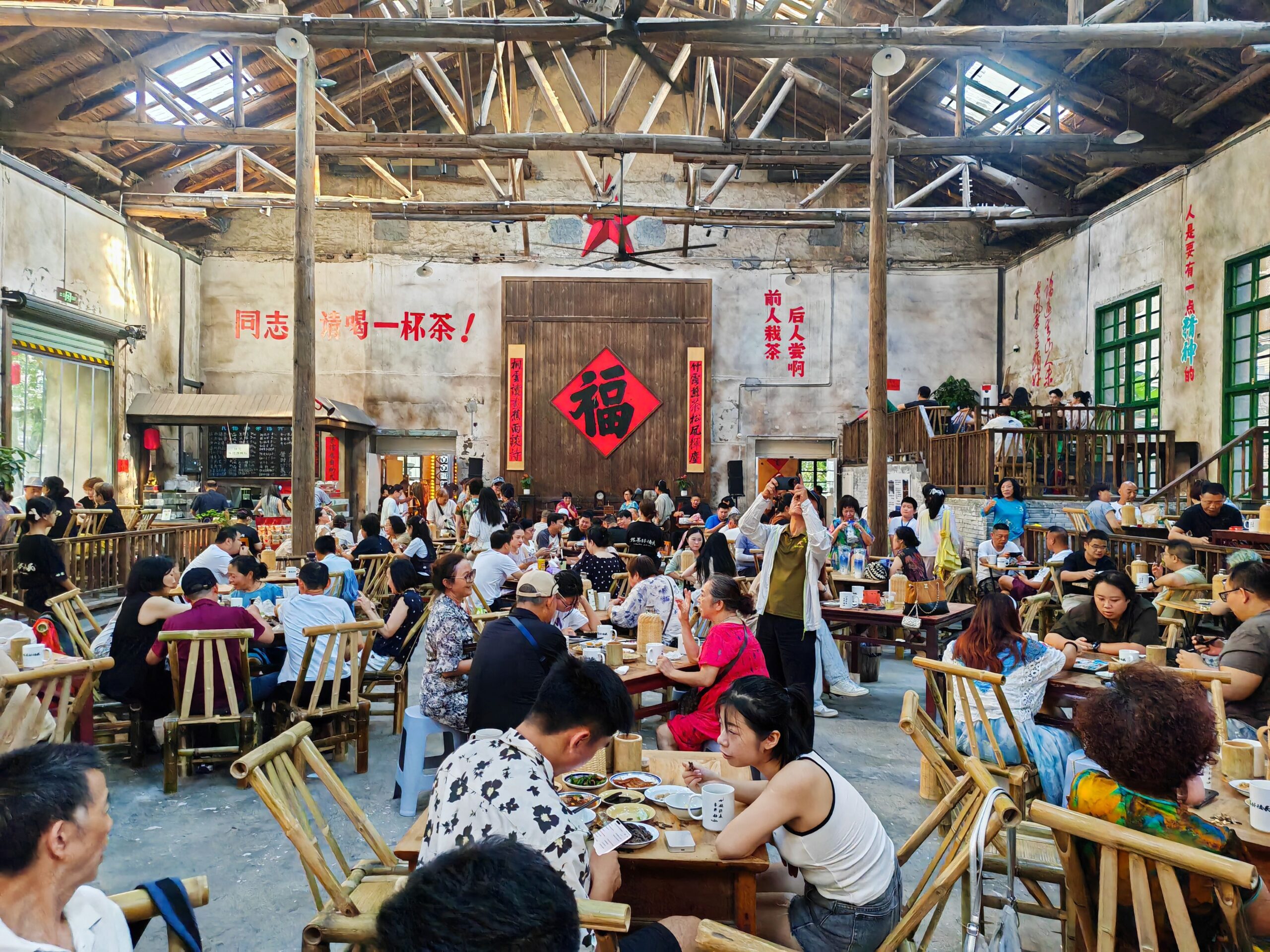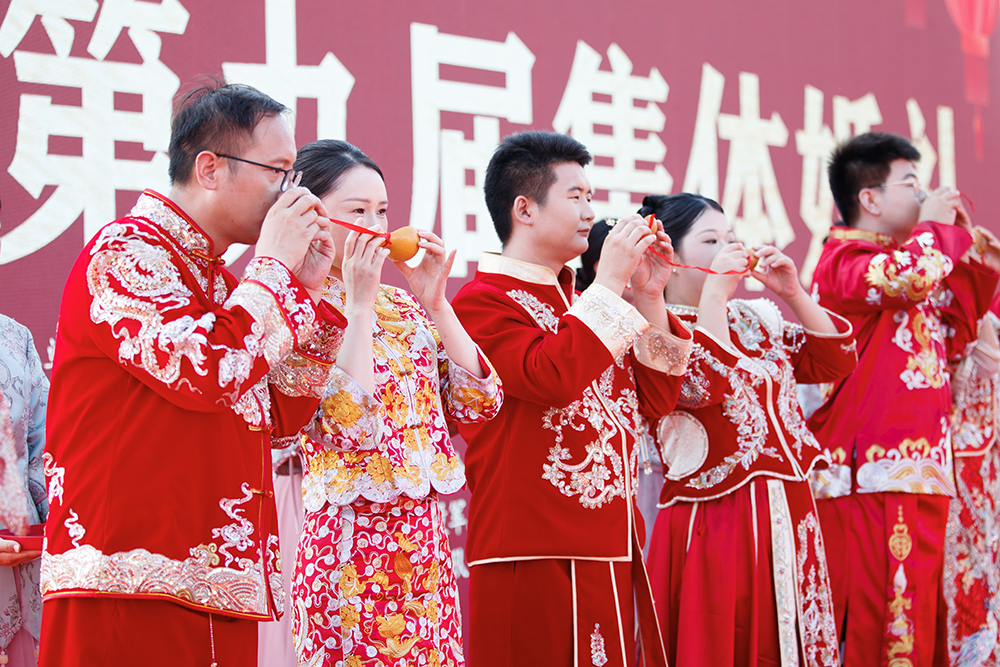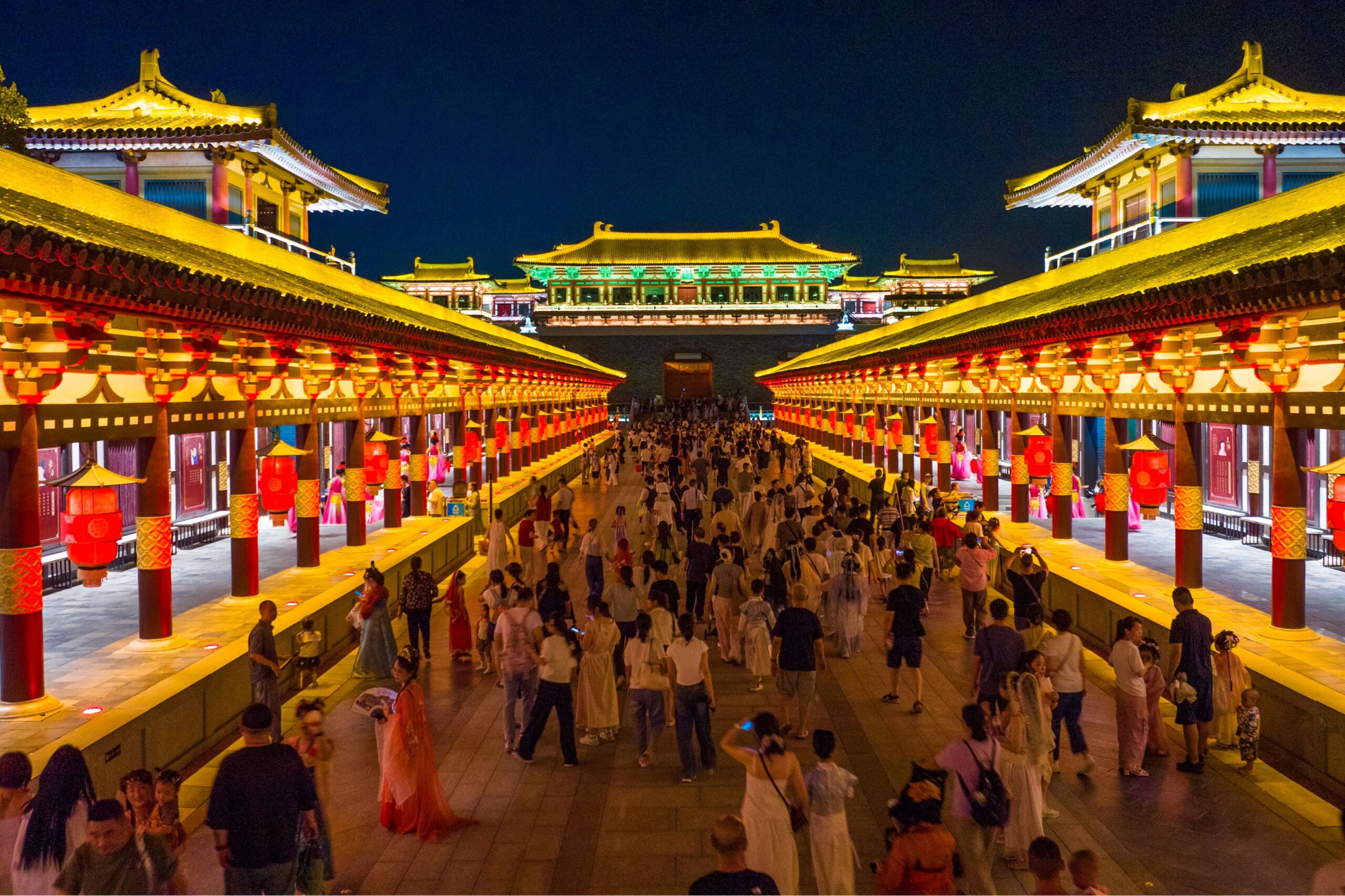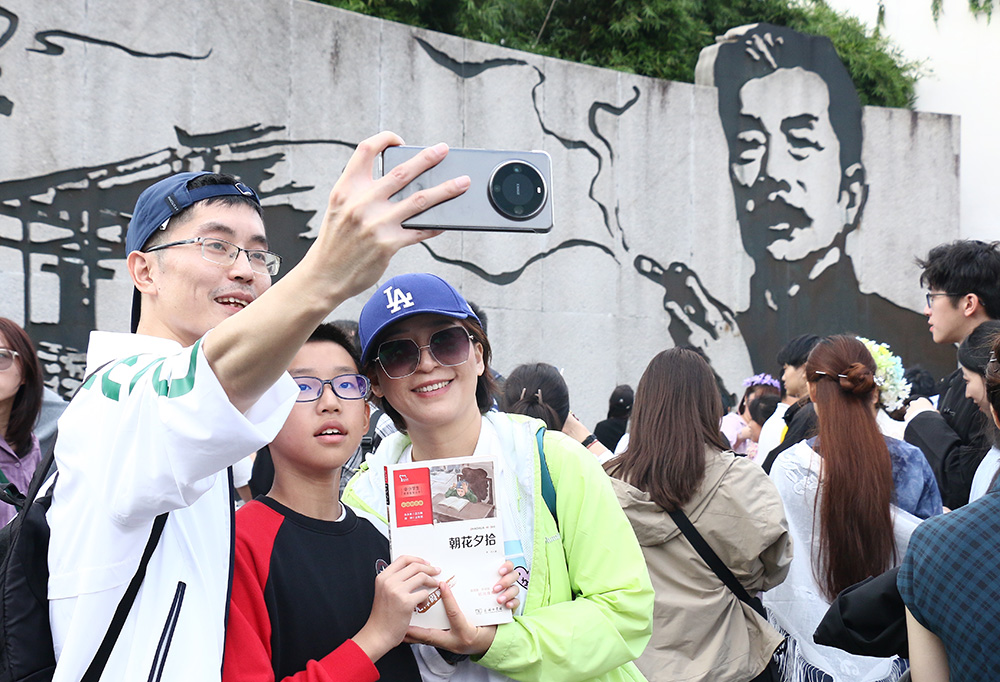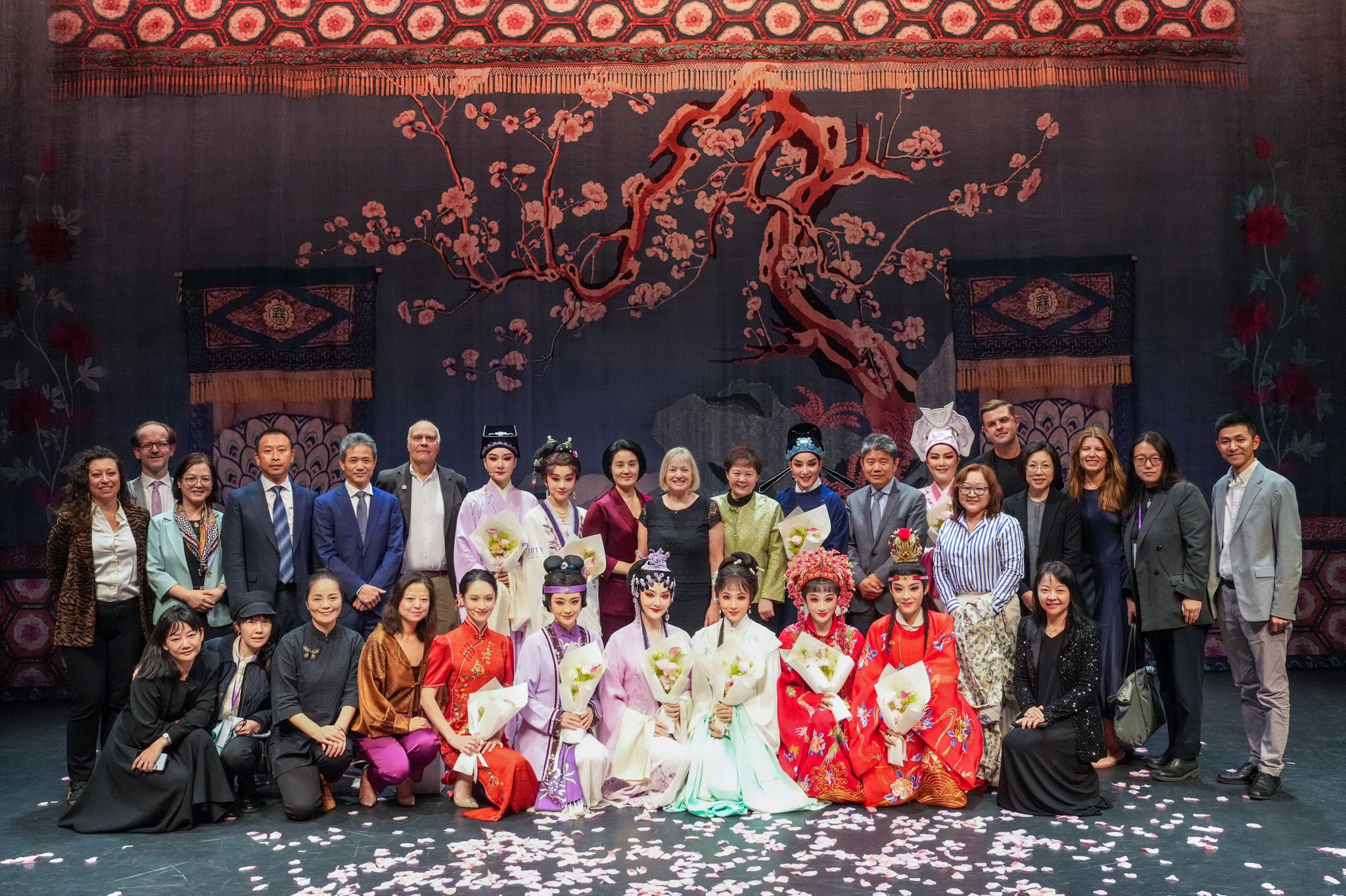Step into China’s teahouses, where history, culture, and community blend. From Nanchang to Chengdu, experience slow life over a cup of tea.
In Nanchang’s old quarter, 70-year-old Xiong Ronghua walked into a newly opened retro teahouse on Minde Road. “I came here to find memories,” he said. “Now there are more young people, but the feeling of comfort and ease is still the same.”
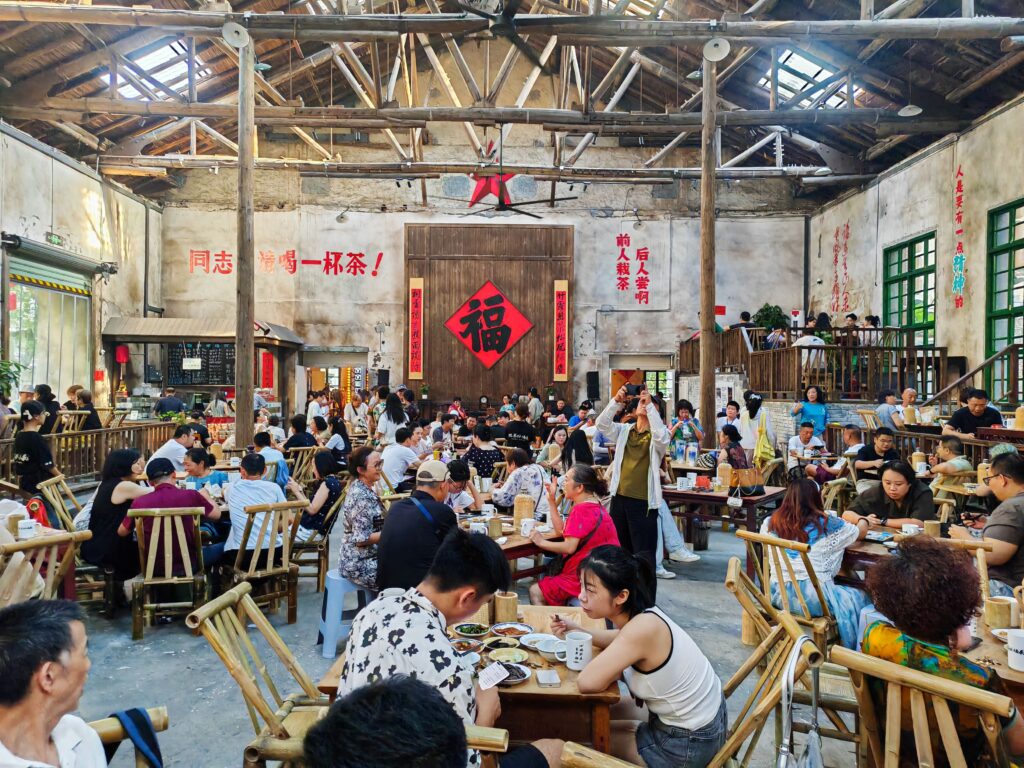
Nanchang: A Living Room for All
Minde Road, the city’s first cement street, has seen a century of change. Once a government auditorium, its old hall is now the Minde Road Teahouse. Inside, chalkboard menus list tea for just a few yuan(RMB). Retired neighbours chat, middle-aged men play chess, students take photos, and children tag along.
The space is filled with bamboo chairs, wooden tables, and the smell of tea. Sometimes visitors enjoy local performances such as Gan opera or face-changing acts (“bian lian” in Chinese). “We don’t want to become just a social media hotspot,” says manager Zhu Tong. “We keep prices low so the place stays open to everyone.”
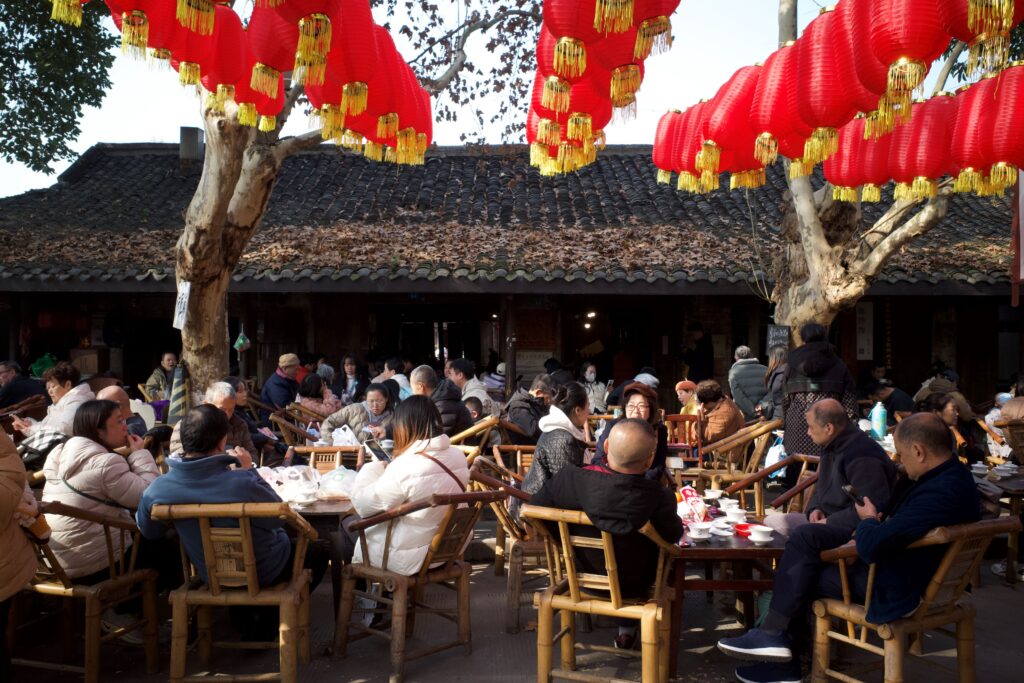
Chengdu: A Cup of Tea for One Yuan
In Chengdu, Guanyinge Teahouse has kept its rustic look and low prices for decades. In 2024, the Guanyin Hall Teahouse Conservation Project was granted an Award of Merit at the 2024 UNESCO Asia-Pacific Awards for Cultural Heritage Conservation. Every New Year, the teahouse glows with red lanterns, while regulars sip tea and swap stories.
Owner Li Qiang has charged just one yuan (about 10p) for more than twenty years. “You can’t make money this way,” he admits, “but the point is to keep the culture alive.” For locals, the teahouse is part of everyday life—a place where community matters more than business.
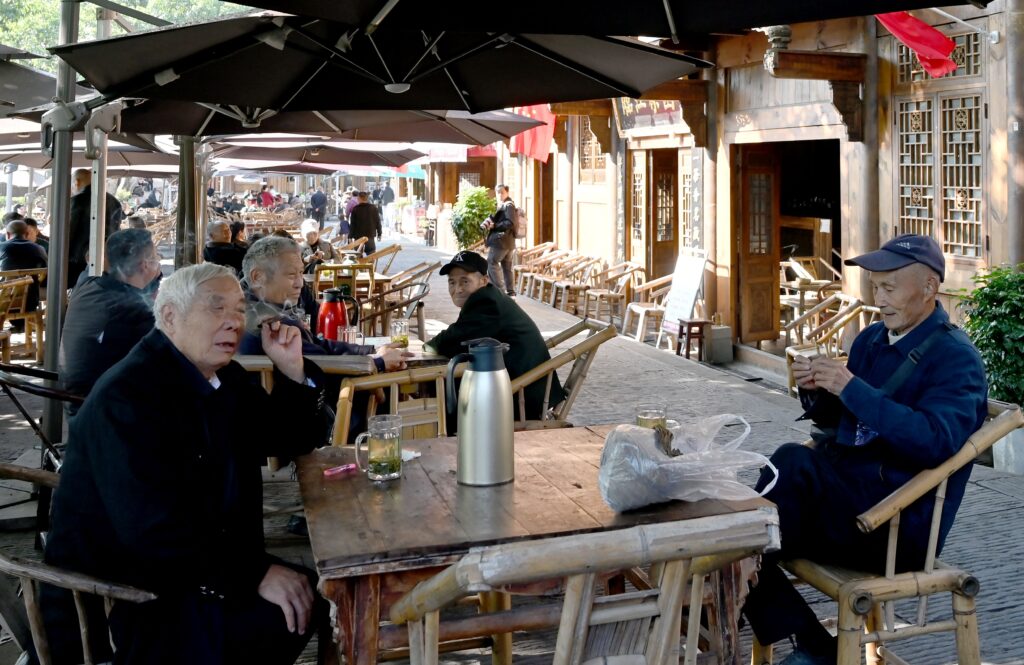
Enyang: Old and New by the River
By the Enyang River in northeast Sichuan, a giant open-air teahouse hosts hundreds of people. The sound of clinking cups mixes with laughter. A teahouse waiter pours boiling water from a long-spouted kettle with acrobatic precision, to the cheers of the crowd.
At the same time, smaller “guan guan cha” shops are attracting younger visitors. Here, friends gather around a stove to simmer tea in clay pots, blending tradition with modern social life.
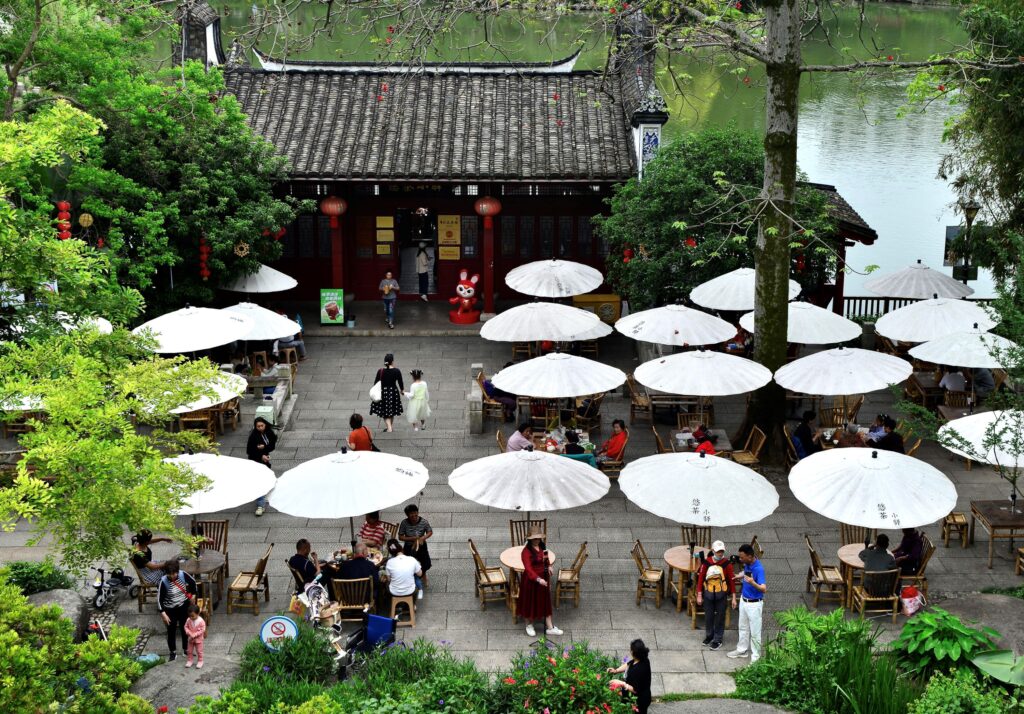
More Than Tea
Chinese writer Lao She once captured half a century of social change in his play Teahouse, where merchants, beggars, and officials shared the same space. Historically, teahouses were stages for storytelling and music, passing on values like loyalty and trust through simple tales.
Today, they remain what pubs are to Britain or cafés to Europe: not just places to drink, but public living rooms where people connect.
In every cup of tea lies more than flavour. There is history, warmth, and community. In the rush of the digital age, that “slow and warm” spirit is worth holding on to.
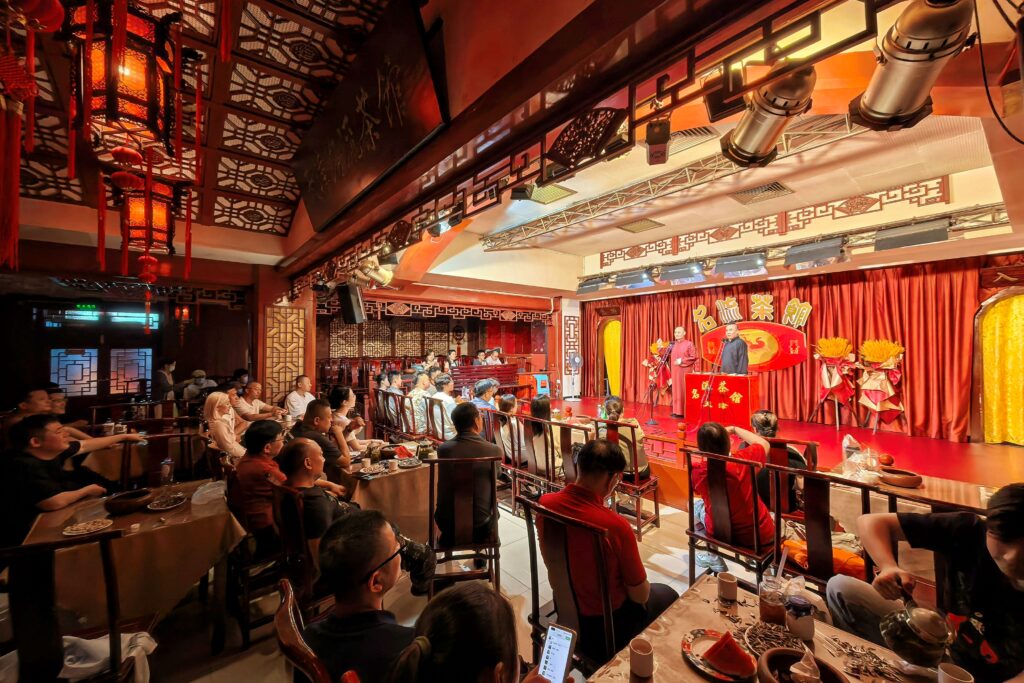
Written by Chen Wang, additional reporting by CNS, Enyang Official Account, Liaoning Daily.
If you liked this article, why not read: A Cup of Butter Tea: Remembering Tibet in Beijing

